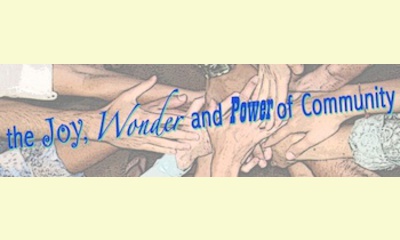|
|
Growing a Culture of Peace in Eugene (Oregon, U.S.)
an article by David Hazen
Reading through our newsletters for
all the events of the last six months, I was
impressed with how much had happened in such a
short time as we grow a culture of peace in
Eugene.

click on photo to enlarge
Eugene crime statistics report an overall downward
trend and the crime rate in Eugene for 2013 is
expected to be lower than in 2010.
Eugene City of Peace is beginning to attract
Facebook friends from around the world as our
unincorporated affinity group documents and
promotes local pro-active peacebuilding. For
example, in the area of Human Rights, Occupy
Eugene is building small shelter huts, pressuring
the city to permit homeless people to camp in
public spaces and provide a designated site for a
village. Occupy Medical is providing free health
care.
The City Council approved a statement last
November supporting the need for immigrants to be
welcome, safe, and included in our community.
Eugene has a Neighborhood of the Year recognized
for their efforts to provide food when school is
out. Women’s equality was supported by One
Billion Rising dance events, and a Community
College symposium, Rise to End Gender Violence in
April. Youth asked if Eugene is a “Human Rights
City?” with story-telling, poetry and song. Ched
Myers lectured on Healthcare and Ecojustice.
Dozens of moms spent their Mother's Day
entertained by the Raging Grannies and marching
against gun violence in the 14th annual Million
Mom March. The March Against Monsanto in Eugene
drew about 1,500 noisy people downtown on May 25
as part of the global protest. There was a
newspaper ad placed on Memorial Day calling for a
lasting peace.
Sustainable development has been getting a boost
from Emerald F.E.A.S.T., which crowd-sources
small grants for local social entrepreneurs. In
February, Woody Tasch came to speak on Slow Money:
Investing As If Food, Farms and Fertility
Mattered, followed by the Green Neighbors Faire
"Creating A Green Community Culture,” a Community
Supported Agriculture event, and "Bringing the
Farm Downtown." As part of Earth Week, Mayor Kitty
Piercy joined Bill McKibben in discussing "Our
Climate, Our Future". Recently, there was a
workshop on the proposed Local Food System
Ordinance, which bans GMO crops, establishes the
right to save seeds, and assigns rights to natural
ecosystems. For a spiritual connection to the
earth, Missa Gaia by Paul Winter was performed in
April.
Local peace education leaped forward with the His
Holiness the Dalai Lama speaking to a crowd of
over 11,000 people in May in support of the
establishment of the Palmo Peace Center. Then the
Nobel Peace Park was inaugurated and Peace
Educator of the Year, Clair Wiles, was recognized.
Earlier, Arun Gandhi spoke about his grandfather
in February. Peace Village has been developing
curriculum to empower teens. The local newspaper
has agreed to publish op-eds from youth.
Conferences have been held on poverty, social
justice, violence and child abuse. Sister Helen
Prejean participated in a series of events about
prisons, compassion and peace. The team planning
the International Day of Peace has been at work
since last November and expects to double or
triple attendance at this year’s event.
|








|
DISCUSSION
Question(s) related to this article:
How can culture of peace be developed at the municipal level?,
* * * * *
Latest reader comment:
International Cities Choose Peace
J. Fred Arment
arment@internationalcitiesofpeace.org
International Cities of Peace, an association of global cities of peace, is using the U.N. Culture of Peace tenets as the guideline for forming initiatives. To date, thirty-one cities are part of the association. Some are grassroots organizations, others have the firm commitment by resolution or proclamation from the city council.
International Cities of Peace include the following:
• Dayton, Ohio, U.S.A.
• Eugene, Oregon, U.S.A.
• Unity Village, Missouri, U.S.A
• Coventry, England
• Bradford, England
• Guadalajara, Jalisco, Mexico
• Bukavu, Democratic Republic of Congo
• Mataki, Philippines
• Pathuthani, Thailand
• Fizi, Democratic Republic of Congo
• Lake County, California, U.S.A.
• Aba, Abia State, Nigeria
• Nagpur, India
• Reno, Nevada, U.S.A.
• Bujumbura, Burundi
• Mzuzu and Lilongwe, Malawi
• Tunis, Tunisia
• Tuolumne County, California, U.S.A.
• Bihac, Bosnia, Herzegovina
• Yaounde, Cameroon
• Freetown, Sierra Leone
• Nyala, Darfur, Sudan
• Bujumbura, Burundi
• Victoria, British Columbia, Canada
• Nakuru, Kenya
• Calgary, Alberta, Canada
• Kathmandu, Nepal
• Detroit, Michigan, U.S.A.
• Egg Harbor City, New Jersey, U.S.A.
• Warrake, Nigeria
• Kalamazoo, Michigan, U.S.A.
To start an initiative, go to the association's website for resources and tools.

|
|









